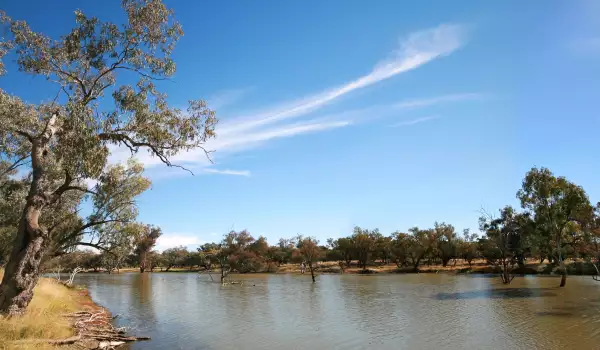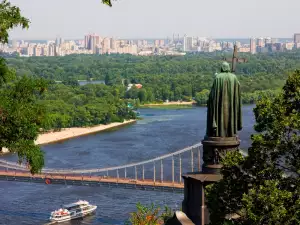River Darling

The Great Dividing Range is a major natural site, which marks the silhouette of Australia. On the crest of the mountain passes, the main watershed of the continent that divides the drainage areas to the Pacific and Indian Oceans. On the western slopes of the Great Dividing Range springs an Australian deep river - the Murray and its main tributary Darling - the third longest river of the continent. The total length of their river system is 3750 km, the irrigated area of which is about 1 million square kilometers
On the Australian continent, Murray River is the most deep and the length of River Darling is essential for irrigation in the continent. Rivers Murray and Darling constitute the most important and only powerful river system in Australia, which covers about 15% of the continent, equal to the size of France and Spain combined.

The length of the Murray is 2570 km and that of the River Darling - 2830 km. Western inlets are minor and sporadic, and generally their river system has an irregular regime. The western estuary of the River Darling was formed the lovely Lake Victoria, which is the largest freshwater lake here.
Darling River springing from the Australian Alps, is an unstable regime and often dries up. It is only navigable to the town of Burke. River Darling joins the Murray at Wentworth in the city of Wentworth, in the southwestern state of New South Wales. Unfortunately along it’s course, the Darling is threatened by overuse, water pollution from pesticides and persistent drought.
In recent years, its water flow was very weak, but much rainfall in 2010 caused more floods. The waters of the Darling are high in salt, which is a prerequisite to reduce her qualities.
Largest cities along the Darling are Brewarrina, Bourke, Louth, Tilpa, Wilcannia, Menindee, Pooncarie and Wentworth. The town of Wentworth has a large river port, which was the most heavily used port in Australia in late 1880, along the Queensland region, now known as the Darling Downs, and was gradually colonized after 1815.
In 1828 researchers Charles Sturt and Hamilton Hume were dispatched by the then Government to explore this world’s territories. They explored the river valley of Macquarie River, discovered Bogan River, and then in early 1829, even the upper reaches of the Darling .
The river was named after Sir Ralph Darling, who was then governor of New South Wales. In 1835 Major Thomas Mitchell travels along the Darling, confirming the earlier discovery of Stewart, that it is a tributary of the Murray. Today the land along the River Darling is mainly used for cultivation of agricultural plants such as corn, cotton, rice , maize , vines, fruits and vegetables.















